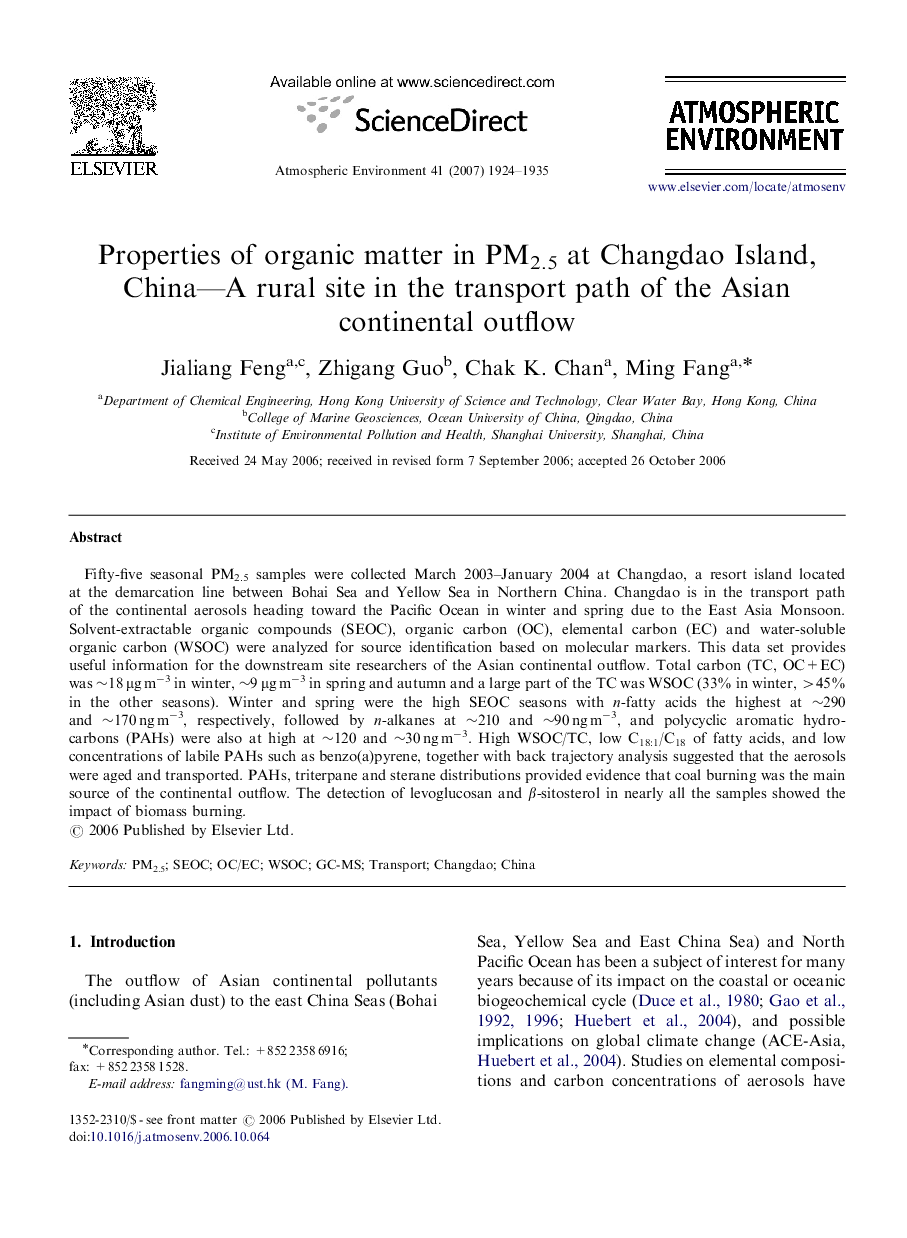| Article ID | Journal | Published Year | Pages | File Type |
|---|---|---|---|---|
| 4443851 | Atmospheric Environment | 2007 | 12 Pages |
Fifty-five seasonal PM2.5 samples were collected March 2003–January 2004 at Changdao, a resort island located at the demarcation line between Bohai Sea and Yellow Sea in Northern China. Changdao is in the transport path of the continental aerosols heading toward the Pacific Ocean in winter and spring due to the East Asia Monsoon. Solvent-extractable organic compounds (SEOC), organic carbon (OC), elemental carbon (EC) and water-soluble organic carbon (WSOC) were analyzed for source identification based on molecular markers. This data set provides useful information for the downstream site researchers of the Asian continental outflow. Total carbon (TC, OC+EC) was ∼18 μg m−3 in winter, ∼9 μg m−3 in spring and autumn and a large part of the TC was WSOC (33% in winter, >45% in the other seasons). Winter and spring were the high SEOC seasons with n-fatty acids the highest at ∼290 and ∼170 ng m−3, respectively, followed by n-alkanes at ∼210 and ∼90 ng m−3, and polycyclic aromatic hydrocarbons (PAHs) were also at high at ∼120 and ∼30 ng m−3. High WSOC/TC, low C18:1/C18 of fatty acids, and low concentrations of labile PAHs such as benzo(a)pyrene, together with back trajectory analysis suggested that the aerosols were aged and transported. PAHs, triterpane and sterane distributions provided evidence that coal burning was the main source of the continental outflow. The detection of levoglucosan and β-sitosterol in nearly all the samples showed the impact of biomass burning.
